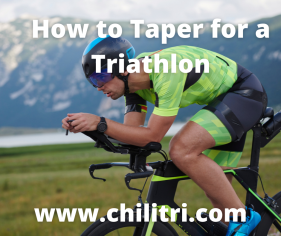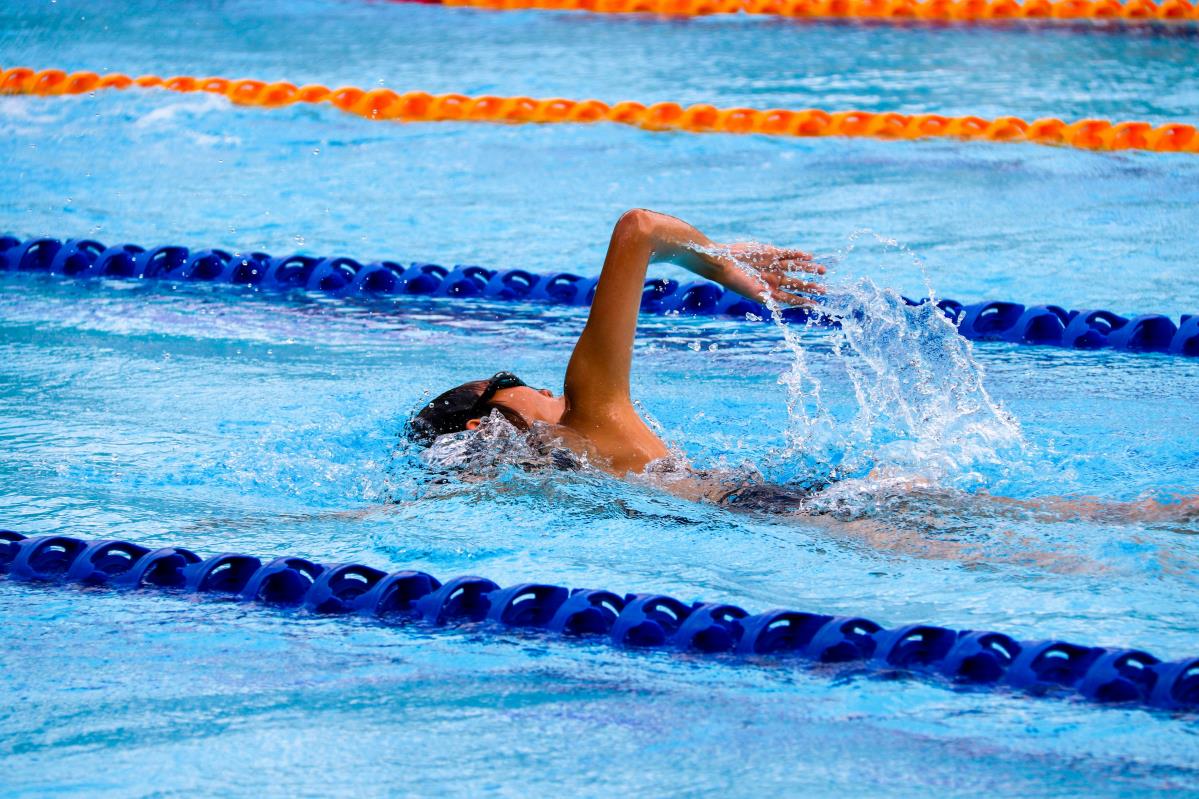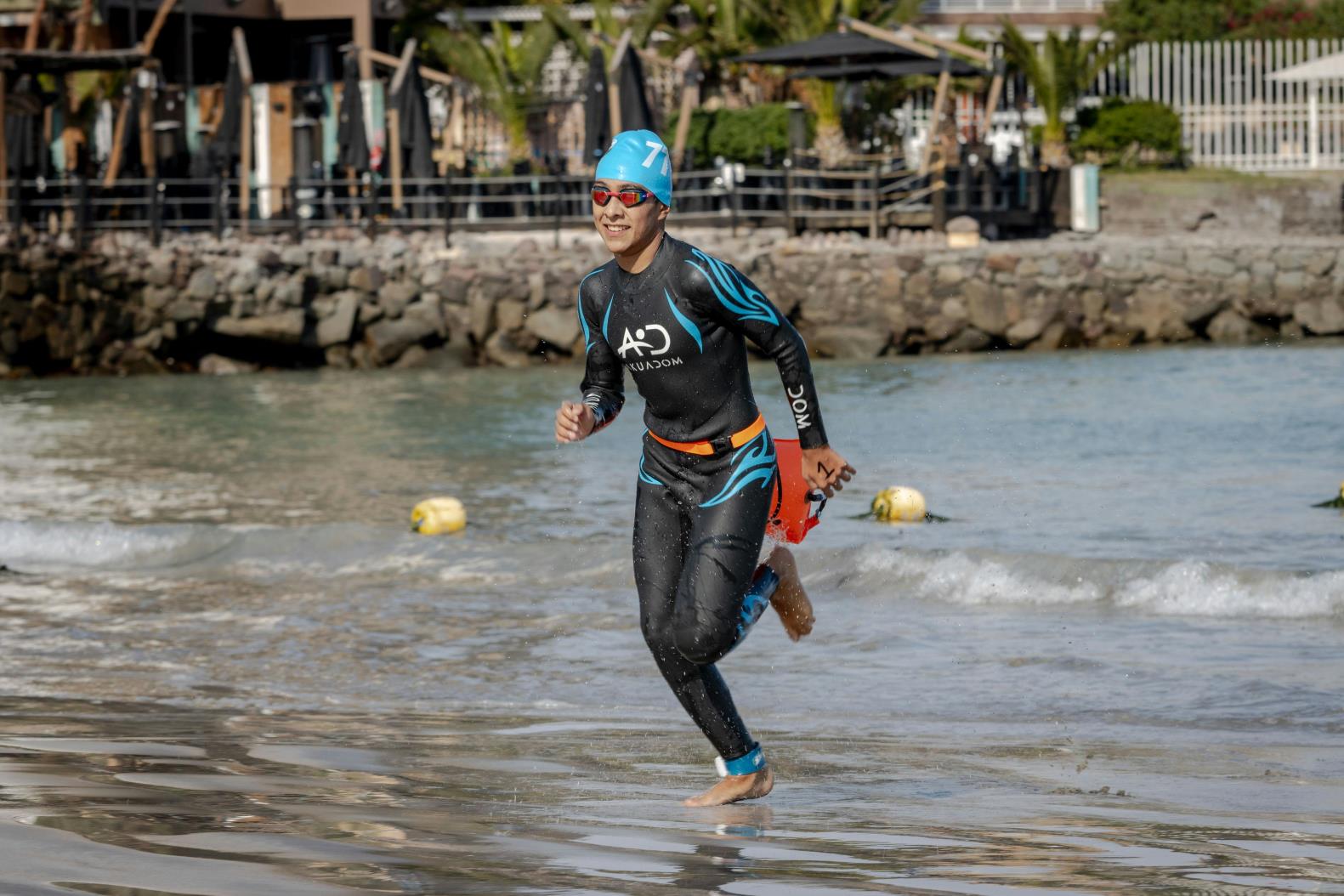How to Taper for a Triathlon
 Karen Parnell
March 01, 2022
Karen Parnell
March 01, 2022

How to Taper for a Triathlon
As a triathlete or endurance athlete you would have heard of the term “tapering” before your event. But how do you do this properly, so you are at your best and ready to perform at your best and get a PB on race day?
There have been many studies on how to taper and some of these studies are listed in the references at the end of this Blog. Tapers are however very individual so this blog will give you a framework to enable you to find out what works best for you.
What is a Taper and Why do it?
Tapering allows you to reach peak performance on race day because you have a reduced the stress levels on your body and mentally (using HRV daily recordings will help you assess the effect on you). As your training load decreases, you will shed your accumulated fatigue. If you are less fatigued you will be able to perform better on race day.
Scientific research points to an improvement of 2-3% from tapering. However, results from studies on cyclists show it can vary from 0.5-8%.
Running and swimming economy both tend to increase due to biomechanical or neurological factors, or both. Your glycogen stores can increase by 15% during this time. Glycogen is a main source of energy for the body. Glycogen is stored in the liver. When the body needs more energy, certain proteins called enzymes break down glycogen into glucose. They send the glucose out into the body. The ability to maintain endurance performance for longer is improved when you have higher levels of glycogen stores. They are particularly important for Olympic distance triathlons and longer. You can read about increasing your glycogen stores and carb loading before your race in this Blog.

Get your FREE Recipe books here.
As with your training you recovery is very individual as you will have found out during your months of training. Tapering is the same and is very individual to you. It may take a few seasons worth of racing to find your optimum taper. This may also change if you are travelling a long distance to your race and how well you adapt to time zone changes.
There are individual variations in how much intensity you need during the taper.
For example, in an interview by Mikael Eriksson with Malcom Brown in 2018 he mentioned Vicky Holland and Non Stanford as examples of two athletes that taper very differently to each other. They placed 3rd and 4th in the Olympics in Rio but approached it very differently.
Even if you have similar characteristics compared to another athlete, how much you train causes individual differences in the taper strategy.
If you train 8-10 hours a week, you most likely don't require a big adjustment compared to an athlete training 16-20 hours per week. There's a lot of trial and error involved in tapering.

Get your FREE 31 Structured Indoor Bike Sessions.
Types of Taper
In an article by Lance Watson he defines three types on Taper:
The Linear Taper
A basic “Linear” taper is straightforward and involves reducing the workload 20 percent two weeks out and a further 20 percent in the final week in the lead up to the race.
The Step Taper
The “Step” taper uses a sudden reduction in training load two weeks out and then maintain the low load for the remainder of the taper time. Research has shown this mode to be the least effective.
The Exponential Decay Taper
The third and final taper is “Exponential”, where the initial volume is gradually reduced 2 to 3 weeks and gets progressively less in the final week prior to the event. For many, this taper is ideal for recovering from the final block of training and then sharpening the body and mind in time for race weekend.

Get your FREE 10k Trail Running Plan
Get your FREE Guide to Running Speed and Technique
Altering Training Load during the Taper
Mikael Eriksson suggests you can alter your training load by altering the intensity and frequency of training and the duration of your taper. The meta-analysis found that maximal performance gains are found if you reduce your training volume by 41-60%.
This gives you a place to start when it comes to designing your own taper. In terms of frequency of workouts, research seems to suggest it's not beneficial to reduce the frequency during the taper.
Some recommendations are you can slightly reduce your training frequency, but not by more than 20%. If you trained 10 times per week before taper, keep 8 workouts a week during taper. When intensity is investigated, research suggests it should not be reduced (relative to total training volume). What changes is how you do it.
For example Mikael Eriksson says, if before your taper you would do 10 x 400 m on the track with a 45 second recovery. The same kind of workout in the taper might be 7 x 300 m with 1 minutes 15 seconds recovery. You make it much less taxing, but you still include the time at intensity.

Photo by Pixabay
Get your FREE Swimming for Triathletes e-book packed with sessions and tips.
Change workouts but don't reduce intensity.
A duration of 8-14 days seems to be a good, sweet spot for your taper. It's a balancing act between reducing your fatigue levels and finding your form but also not loosing your fitness.
Depending on your target race your taper could be as short as a few days for sprint distance and up to 4 weeks for an Ironman race.
If you have a high training volume or high intensity before your taper you may require a longer taper.
If you want to read more about this take a look at the meta-analysis mentioned in the links and resources below.
Tapering for Different Disciplines
Taper studies have shown that intensity should be maintained across all three disciplines.
Volume across each of the disciplines is different.
For the swim a 41-60% reduction in volume has been shown to be optimal.
For the bike & run a 21-60% reduction is indicated in the studies.
It's important to find out what works for you. As with most studies they tend to test theories on Elite or high level athletes so you may not need a larger taper volume in swimming versus biking and running if you're not swimming with really high volumes or distances in our training.
Running is hard on your body, and it can take you longer to recover so it may make sense to reduce the volume in this area more and more sooner than the bike and swim which are both lower impact. Also running has been the discipline that causes the most injuries in athletes so reducing running in the two weeks before a race should statistically reduce your risk of injury.

Get your FREE swim workouts for open water swimming e-book
Other Considerations or your Taper
There are other considerations over and above swimming, cycling and running and these include recovery, nutrition and hydration, S&C and travel. Sleep as we know is a great recovery mechanism and less training permits more time for sleeping, and it can have tremendous performance benefits. Wearing compression garments can help get rid of soreness, I reviewed CEP compression garments and their benefits for TriRadar. Getting massages can also be good, but this is not a good idea the day before your race.
Strength and conditioning is an other area that needs to be considered. Most athletes completely cut this out in taper but some keep up with mobility work and use Yoga, Pilates and other mobility routines to keep them selves feeling in good condition and ready to race. Again this is highly personal.
Hydration is important and the colour of your urine can be a good marker for that (the lighter the better). Leading up to your race you will want to carb load and increase your electrolyte intake.
The Key to Your Taper
- Decrease volume but remember it's individual.
- Maintain, or only slightly decrease frequency of workouts.
- Maintain intensity, but the nature of your intense workouts will change.
- Studies have shown that 8-14 days is an ideal duration for the taper but find out what works best for you.
- An exponential fast decay taper is potentially the best shaped taper, which means you reduce quite a bit 2 weeks out, and gradually reduce more and more.
- Tapering is highly individual so experiment with what works for you and your race distances.
- After your race analyze your race stats and your taper so you can record the right type of taper works for you.
Get some FREE resources including training plans here.
Conclusion: Nailing yout Taper
Implementing a well-structured tapering phase is essential for arriving at your triathlon feeling refreshed and ready to perform at your peak. By thoughtfully reducing your training volume while maintaining intensity, you allow your body to recover and your energy stores to replenish. Remember, tapering is a personal process—experiment with different approaches to discover what best suits your needs.
With careful planning and attention to your body's responses, you'll be set to achieve your best performance on race day. Enjoy the journey and race strong!
Karen Parnell is a Level 3 British Triathlon and IRONMAN Certified Coach, 8020 Endurance Certified Coach, WOWSA Level 3 open water swimming coach and NASM Personal Trainer and Sports Technology Writer.
Karen is currently studying for an MSc in Sports Performance Coaching at the University of Stirling.
Need a training plan? I have plans on TrainingPeaks and FinalSurge:
I also coach a very small number of athletes one to one for all triathlon and multi-sport distances, open water swimming events and running races, email me for details and availability. Karen.parnell@chilitri.com
Get your FREE Guide to Running Speed and Technique
Get your FREE Swim Workouts for Triathletes E-book
Get your FREE Open Water Swimming Sessions E-Book
FAQ: How to taper for a triathlon race
What is tapering?
Tapering refers to the reduction in training volume and intensity leading up to a race to allow the body to recover, restore energy reserves, and optimize performance.
Why is tapering important for a triathlon race?
Tapering is important for several reasons:
- Recovery: Tapering allows the body to recover from the accumulated fatigue and stress of training, leading to physical and mental freshness.
- Adaptation: Tapering promotes physiological adaptations that enhance performance, such as glycogen replenishment, muscle repair, and improved neuromuscular coordination.
- Energy restoration: Tapering allows glycogen stores to be replenished, leading to increased energy availability for the race.
- Injury prevention: Tapering reduces the risk of overuse injuries by giving the body time to heal and repair any minor muscle or joint issues.
- Performance optimization: Tapering allows athletes to peak their fitness and performance potential for race day.
How long should the taper period be for a triathlon race?
The length of the taper period can vary depending on factors such as the athlete's experience, race distance, and individual response to training. In general, a taper period of 1 to 3 weeks is commonly used for triathlon races. Longer distances, such as Ironman, may warrant a longer taper period.
What should be included in a taper plan for a triathlon race?
A taper plan for a triathlon race typically includes the following elements:
- Volume reduction: Gradually reduce the overall training volume, including swim, bike, and run distances, while maintaining intensity.
- Intensity maintenance: Maintain some high-intensity efforts during the taper to keep the body primed for race pace.
- Recovery sessions: Incorporate more rest days or easy recovery sessions to allow for proper recovery and rejuvenation.
- Race-specific simulations: Include shorter, race-specific workouts to maintain race pace and rehearse key aspects of the race.
- Mental preparation: Dedicate time for mental preparation, visualization, and positive reinforcement to build confidence and focus.
Should athletes completely stop training during the taper period?
No, athletes should not completely stop training during the taper period. The goal is to reduce training volume and intensity, not to become completely sedentary. It's important to maintain some level of activity to keep the body active, prevent detraining, and retain neuromuscular efficiency.
How should nutrition and hydration be adjusted during the taper period?
Nutrition and hydration during the taper period should be adjusted to support recovery and optimize energy stores. Focus on consuming a balanced diet with adequate carbohydrates to replenish glycogen stores. Hydration should be maintained as usual, ensuring adequate fluid intake throughout the day.
What should athletes expect during the taper period?
During the taper period, athletes may experience a range of physical and psychological sensations:
- Physical sensations: The body may feel restless, as it's accustomed to higher training volumes. Some athletes may experience minor aches or stiffness as the body repairs and adapts.
- Psychological sensations: Athletes may feel restless, anxious, or irritable due to reduced training stimulus. It's important to manage expectations and trust the taper process.
How can athletes make the most of the taper period?
Athletes can make the most of the taper period by:
- Sticking to the taper plan: Follow the prescribed taper plan without the temptation to add extra workouts or intensity.
- Prioritizing recovery: Focus on quality sleep, proper nutrition, and stress management techniques to support optimal recovery.
- Mental preparation: Use visualization techniques to mentally rehearse the race, build confidence, and reinforce positive self-talk.
- Maintaining routine: Stick to a routine that provides structure and familiarity, including mealtimes, pre-race rituals, and sleep patterns.
Remember, tapering is a critical phase in triathlon race preparation that allows the body to recover, adapt, and perform at its best. Every athlete is unique, so it's important to tailor the taper plan to individual needs and consult with a coach or experienced triathlon professional for personalized guidance.
References
Tapering for triathlon competition (Mujika, 2011)
Peaking for optimal performance: Research limitations and future directions (Pyne et al., 2009)
Scientific Bases for Precompetition Tapering Strategies (Mujika and Padilla, 2003)
Effects of Tapering on Performance: A Meta-Analysis (Bosquet et al., 2007)
Short-term performance peaking in an elite cross-country mountain biker (Rønnestad et al., 2016)
Specific Intensity for Peaking: Is Race Pace the Best Option? (Munoz et al. 2015)
A theoretical study of taper characteristics to optimize performance (Thomas and Busso, 2005)
Functional Overreaching: The Key to Peak Performance during the Taper? (Aubry et al., 2014)
TrainingPeaks article by Lance Watson.
#triathlontaper #taper #chilitri #triathlon #swimming #cycling #running #ironman #femaletriathloncoach #traithlontrainingplans #swimmingtrainingplans #runningtrainingplans
